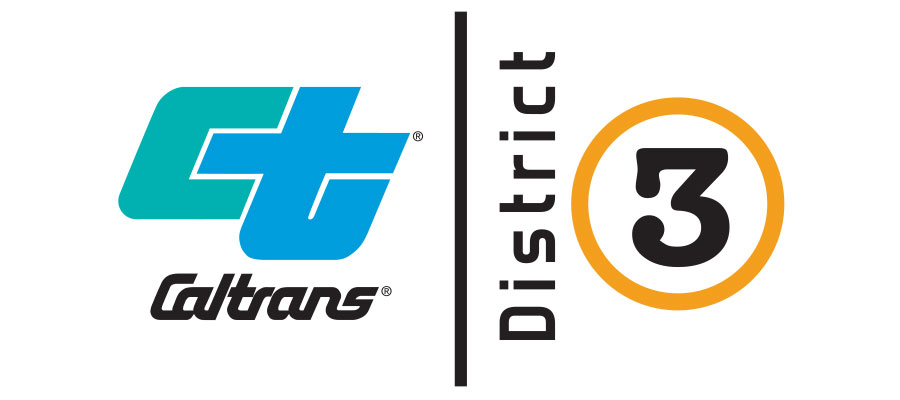Title Page
-
Site conducted
-
Conducted on
-
Prepared by
-
Location
FACILITY SAFETY INSPECTION
ADMINISTRATION
-
Are written procedures for injury reporting posted and visible to employees?
-
Are emergency evacuation procedures posted in a prominent area visible to employees?
-
Are training records available for review? Fall Protection; Lock Out/Tag Out; Hazard Communication; Bloodborne Pathogens; Powered Industrial Vehicles
-
Are powered industrial vehicle pre-operation inspection checklists available for review (1 year retention)?
-
Are cranes/lift equipment inspected at least annually and records available for review?
-
Are safety messaging (e.g. Safety Starts With Me) information relevant and current?
-
Do employees know where to find safety policies and Job Safety Analyses (JSAs)?
-
Do employees know how to report safety concerns?
-
Do employees know how to utilize fire extinguishers?
-
Other
WORKING AREAS & WALKING SURFACES
-
Are wet floor signs used and placed appropriately every time a hard surface floor is mopped and whenever the floor becomes wet due to adverse weather conditions?
-
Is proper housekeeping maintained in all work areas? For example, excessive materials not stored in working areas/blocking aisles?
-
Are mop buckets emptied after each use with mop heads stored in a clean and sanitary condition and hung to properly dry between uses?
-
Are the tops of lockers maintained free of debris and storage?
-
Are sidewalks, drives, and parking lots free of hazards?
-
Is walking surface free of trip/slip hazards (e.g. tools/materials do not pose a hazard?
-
Are stairwells free of obstructions and handrails properly installed, where applicable?
-
Are all floor openings (holes, sewers, skylights) protected by barriers, banners, and/or other warnings?
-
Are all handrails, chains, and/or doors in place and in a closed position when provided on service platforms, mezzanines, or upper level storage areas every time a train is not present or the upper area opening is not being used?
-
Overhead platforms, lofts, and balconies are guarded with a standard four-inch toe board?
-
Other
PERSONAL PROTECTIVE EQUIPMENT
-
Is Amtrak provided PPE utilized as required, clean, properly stored when not in use, and in good condition?
-
Are employees wearing respirators in accordance to Amtrak's policy (employee does not have facial hair that interferes with respirator's seal, employee has been fitted for type of respirator)?
-
Is arc flash rated clothing used where required?
-
Is hearing protection worn by employees where required?
-
Are hardhats provided and worn where required and when there is a danger of falling objects?
-
Other
LIFE SAFETY EQUIPMENT
-
AED is readily available, stored properly, unobstructed and accessible at all times (not locked in office)?
-
AED is in good condition and batteries are not low and/or pads are not expired?
-
Is first aid kit available and fully stocked?
-
Are eyewash stations and emergency showers readily accessible, properly marked, and maintained?
-
Are eyewash stations and emergency showers inspected monthly?
-
Are portable eyewash stations fluid changed at least every 90 days? If eyewash solution bottles are used, are they within the expiration date?
-
Are fire extinguishers inspected monthly and are current with the annual inspection?
-
Are fire extinguishers mounted and unobstructed?
-
Are emergency exit signage adequately illuminated and pointed in the right direction? Are those with the emergency lighting checked once a month?
-
Is there a minimum of 18" clearance between storage and sprinkler heads?
-
Are fire alarm pull boxes unobstructed?
-
Are non-smoking signs/areas enforced?
-
Other
MATERIAL HANDLING & STORAGE
-
Is proper material lifting operations observed?
-
Are racks and shelves in good condition? Look for dents, or any damage in the vertical supports; and are shelves not sagging.
-
Is storage of materials stable and secured against collapsing or shifting?
-
Other
POWERED INDUSTRIAL VEHICLES
-
Are vehicles in good condition?
-
Are electric vehicle charging locations clear of combustible/flammable materials?
-
Is proper powered industrial vehicle operation observed, including wearing of seatbelt, not leaving vehicle unattended while running?
-
Are forklifts properly stored with forks lowered to the ground, parking brakes applied and key removed?
-
Are daily inspections performed prior to first use and log entry completed?
-
Do all operators have current qualification?
-
Are all traffic signs observed during operation?
-
Are pedestrians given the right-of-way?
-
Other
MACHINERY & MACHINE GUARDING
-
Is machinery permanently affixed to floor/bench for stability?
-
Is the point of operation exposing employees to injury guarded and functioning?
-
Are rotating parts recessed or covered with collars?
-
Abrasive machinery - do side guards cover spindle, nut, flange and 75% of the wheel diameter?
-
Abrasive machinery- is work rest in place and adjusted to within 1/8 inch of wheel face?
-
Abrasive machinery - are wheel surfaces kept smooth, flat and free of foreign materials?
-
Are mechanical or electrical power controls (shut off button) provided on each machine for the operator to cut the power off from each machine without leaving their position at the point of operation? Button to be placarded or red in color.
-
Is long hair tied back when around machinery? (Hair that touches shoulder must be tied back). Apron strings and non-breakaway badge lanyards, etc. should also be secured in such a manner.
-
Other
LADDERS
-
Are ladders maintained in good condition at all times?
-
Are fixed ladders equal to or greater than 20 feet in height have a cage or ladder safety device installed and used during climbing?
-
Are ladder rungs and steps corrugated, ridged, dimpled, or coated with skid resistant materials to minimize slipping?
-
Other
FALL PROTECTION
-
Is guarding provided to protect employees from falling through/from open stairways, wall openings, open sided floors or platforms greater than 4 feet above surfaces?
-
Is a rescue plan in place to provide for prompt rescue of employees in the event of a fall, or assurances that employees are able to rescue themselves with provided self rescue equipment?
-
Are personal fall arrest systems, harnesses, lanyards, self retracting lanyards, anchors, snaphooks, and equipment inspected prior to each use for wear, damage, illegible or missing labels and other defects? Defective components removed from service?
-
Are harnesses and lanyards properly stored and in good condition? Harnesses are to be hung.
-
Other
HAZARDOUS MATERIALS
-
Are flammable cabinets closed/secured?
-
Do employees know how to locate a Safety Data Sheet (SDS)?
-
Are spill kits provided where spills can occur? Are staff knowledgeable on location, how to use them, and obtain replacement?
-
Are employees utilizing eye and face protection when handling chemicals?
-
Are chemical containers closed when not in use?
-
Are chemical containers clearly labeled?
-
Are waste containers labeled and stored in the proper location?
-
Other
FACILITY
-
Are walls and structural supports in good condition?
-
Is there evidence of leaks in the roof or basement?
-
Does the facility have sufficient lighting to safely operate in and around building?
-
Are stairways clear, unobstructed and in good condition?
-
Is the minimum width of any aisle leading to an exit at least 44 inches?
-
Other
ELECTRICITY
-
Are extension cords used only to power mobile equipment/tools? Extension cords are not to be used for permanent wiring or used to power permanent machines/equipment.
-
Are all extension cords and equipment cords run so as to prevent damage to the cord insulation?
-
Are all extension cords and equipment cords placed in such a manner to prevent trip/fall incidents?
-
Are all power strips/extension cords plugged directly into an outlet and not connected (or daisy-chained) to other power cords?
-
Do electrical panels have a clear area at least 36-inches in front?
-
Are receptacles near water sources protected by a GFCI and is functional?
-
Are faceplates on switches, receptacles, and junction boxes present, and are they tight fitting with no exposed wiring?
-
Are cords and plugs free from damage? Check for frays, kinks, etc.
-
Are all openings in circuit panels/boxes covered or used? Observe a representative sample throughout the facility.
-
Are electrical rooms free from excessive storage? Ladders and small tools are okay.
-
Other
LOCKOUT/TAGOUT
-
Are the applicable department and site procedures for the application of lockout/tagout adhered to?
-
Have all potentially hazardous stored or residual energy sources been identified, rendered safe, and positively verified prior to affixing lockout/tagout controls?
-
Are employees aware of lockout/tagout and associated procedures?
COMPRESSED GAS CYLINDERS
-
Are cylinders legibly marked to clearly identify content?
-
Are cylinders stored away from heat source and do they have separation between flammables and oxidizers? For example, separate acetylene from oxygen cylinders.
-
Are all cylinders properly secured with straps or chains to prevent tipping/falling?
-
Are protective valve caps in place when cylinder is not in use?
HOISTS, CRANES, AND LIFTING DEVICES
-
Are all slings, hoists, chains, jacks, and supports certified and tagged with load limits and inspection dates?
-
Is the weight of all loads known and is the crane inspected before use?
-
Is there full, unrestricted view for operator before lifting load? Or does operator have assistance if view is obstructed?
-
Are outriggers used, all loads being lifted overhead secured, and area beneath clear of people?
-
Are alarms working and audible?
-
Does the crane operator have a current license of certificate?
ERGONOMICS
-
Are potential ergonomic problems (strains, excessive twists, reaching) observed with workstation, keyboard, or job tasks?
-
Are employees using safe lifting techniques?
-
Are mechanical lifting aids available for heavy or awkward items?









